The Archaeologist Newspaper
ISSN: 3049-7965 (Print: Monthly edition in preparation)
ISSN: 3049-7973 (Online: Weekly edition in preparation)
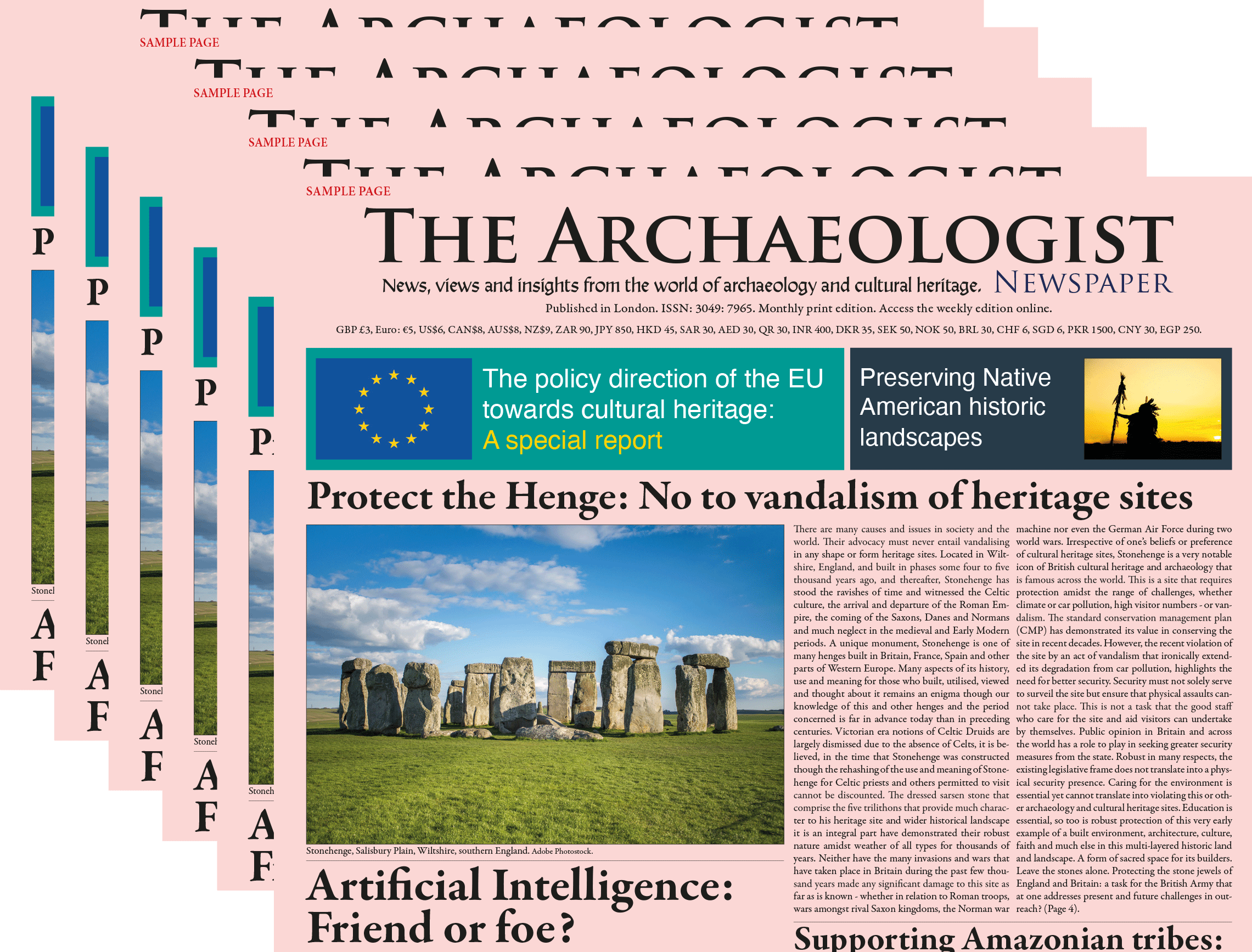
Overview
A pioneering project in its aims, scope and approach, The Archaeologist Newspaper (TAN) provides a rich diversity of articles, pieces and information about the subject and world of archaeology and cultural heritage. Interested in all scales, and their relationships, the presently under development newspaper addresses the locale, region, country, broader region and global. Spanning the ages, whether very distant and more recent, a huge number of places, persons, phenomena and themes, The Archaeologist Newspaper provides the reader with a substantive body of knowledge and understanding that has been authored by those engaged in this subject, its many specialisms and related fields at all levels, concerning subjects, topics and issues, including what archaeology is, how it is undertaken and its benefits. Monuments, historic landscape and landscape archaeology, fieldwork and its analysis, artifacts and their interpretation, settlement, trade, clothing, technology, expression, zooarchaeology, archaeobotany, climate change over tens of thousands of years, prehistory and a huge plethora of periods (Upper Palaeolithic, Mesolithic, Neolithic, Chalcolithic, Copper Age, Iron Age, and many others) and stratigraphy, ethics, how to maximise engagement with archaeology and its study, preservation of the past, public engagement, publications and much else are addressed in a searching manner, including interviews with expertise. New avenues of inquiry and horizons are highlighted and established. Critical examination of the history of archaeology is also provided, including issues of dating and typologies. Contributing to those who study and work in archaeology, cultural heritage and related fields, our publication is also aimed at enhancing public knowledge of this subject. This is achieved via specific articles and pieces that unpack concepts, terminology, projects and public engagement. Reflective of our aims, articles and pieces are written in a journalistic and engaging manner whilst featuring substantive knowledge, expertise and nuance. An innovative intersection and style of archaeology and journalism is further evident in the focus on the enrichment of all scales by the interaction of people of different cultures and civilizations in history. Examination and dissemination of this notable dynamic in the human story that has ignited change is a key aim of World Heritage Books, the British publisher of this newspaper.
Articles and pieces are carefully written in sharing great efforts in archaeology that are provided at your fingertips. Reflective of our focus on cognitive justice, as our writers and readers are located across the world, articles and pieces that focus on relatively lesser focussed, in addition to more famous subjects, issues, places, persons and phenomena also contribute to our public outreach work. Contribution is also made to specialism, whether field archaeology, landscape archaeology, underwater archaeology and other areas. Sharing developments, finds, research, stories and much else to a worldwide readership, The Archaeologist Newspaper both reflects on and sets the agenda. Whether addressing local, national, regional or global issues and their interrelationships, this newspaper provides unique insights, reportage and analysis. Reflective of our mission, we share precious nuggets of knowledge from the world of archaeology and cultural heritage from excavation to presentation whether in print or online format or museum display or other media, including film and documentaries. AI is also examined, critiqued, and, where suitable, utilised. First conceptualised over twenty years ago by the director of World Heritage Books, bringing a world of archaeology and the human story to a global readership, we make this field relevant and engaging for people of many different backgrounds. Drawing on a substantive pool of expertise and talent, using text, numbers and illustrations, we help to connect you to the past and to one another in society and across the world. Enrich your understanding of the cultural heritage landscape around you and across the world. Broaden and deepen your knowledge and insights in a meaningful, intriguing and enjoyable manner. Whether you wish to engage in summary or more in-depth articles and pieces, regulars or features, join us in this journey of exploration and knowledge. A great investment of your time and curiosity, many of our forthcoming articles and pieces are timeless and can be read and enjoyed throughout the year and for a lifetime, as we help you to build up a very fascinating jigsaw of the human story, including that of civilization, including its very ebb and flow.
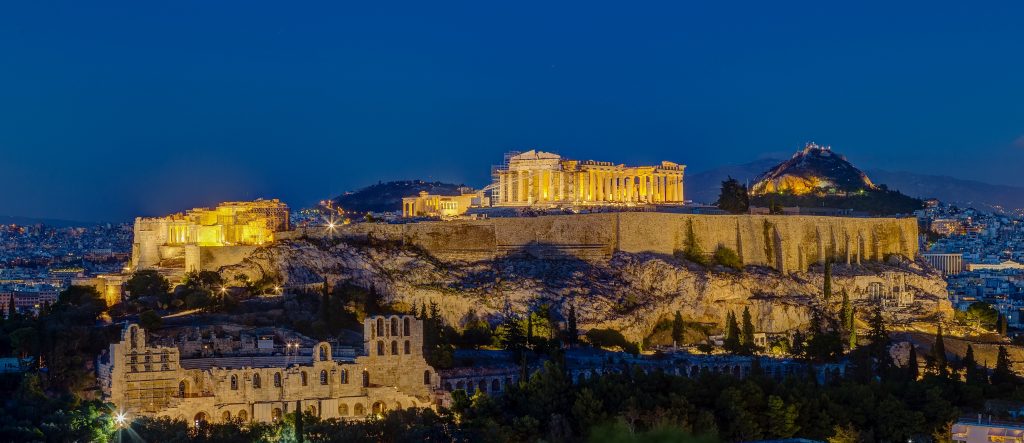
Values
We are committed to ethical journalism. Further addressed below, this entails a commitment to research and produce news stories and features that are well-researched and provide a balanced picture. This approach extends that of scholarship in archaeology, which requires an effective balance of evidence and its interpretation. Transparency of aims, approaches and sources of information are significant issues. Although news stories cannot be punctuated with the large number of references evident in academic scholarship, some of our features include references to scholarship. Checking facts and ensuring that we inform our readership are also key values in our work. Pluralism and cognitive justice: We seek out and disseminate the views of people of diverse ethnicities, including those whose voice is seldom heard across the world. We also contribute to knowledge and understanding of the in-depth heritage of various cultures and ethnicities and their links with others in highlighting the dynamism of the history of people, place and phenomena. Upholding the United Nations Charter, we are opposed to racism and discrimination, including the monopolisation of knowledge and exclusion of people based on their ethnicity. Our work is for all and actively seeks to foster harmony in society and across the world and the single human race that we are all an integral part of. We contribute a healthy ecology of knowledge that links people across time and space. We are opposed to slavery in all its shapes and forms. The paper used in our publication is sourced from forests that are replenished. Paper used is acid-free. See also ‘impartiality’ below.
Impartiality
We are a non-political publication. Although some of the news stories that we cover may engage with political issues that concern archaeology and cultural heritage, such as the need for robust legal protection of heritage sites and monuments, we are not a political newspaper. Our newspaper neither subscribes to nor disseminates [political] party politics or political ideology, whether domestic or foreign. See also ‘professionalism’ and ‘values.’
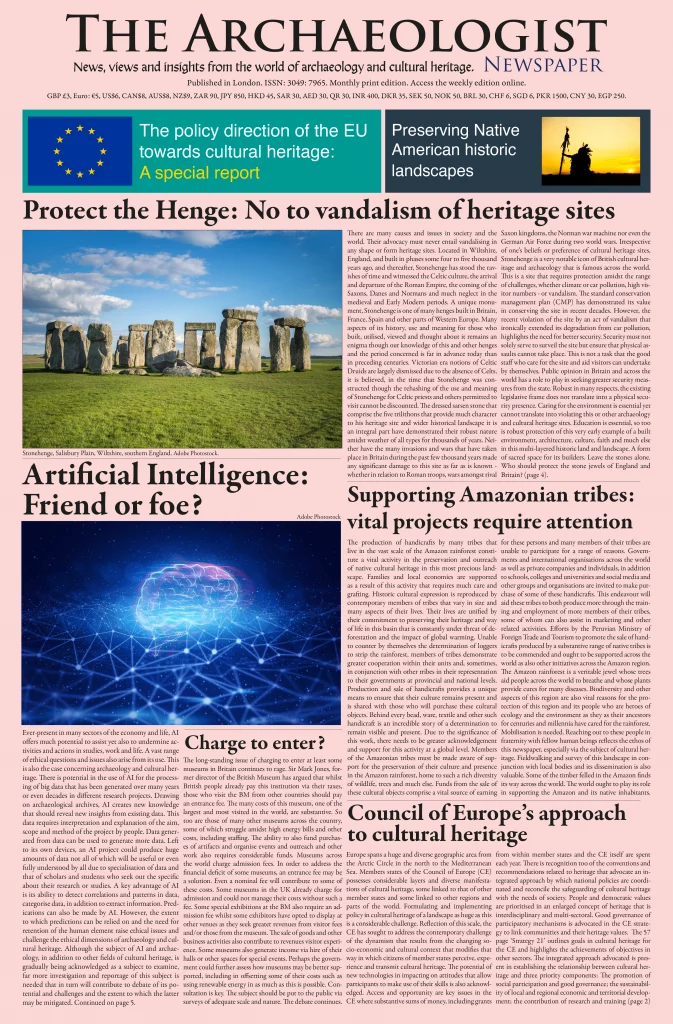
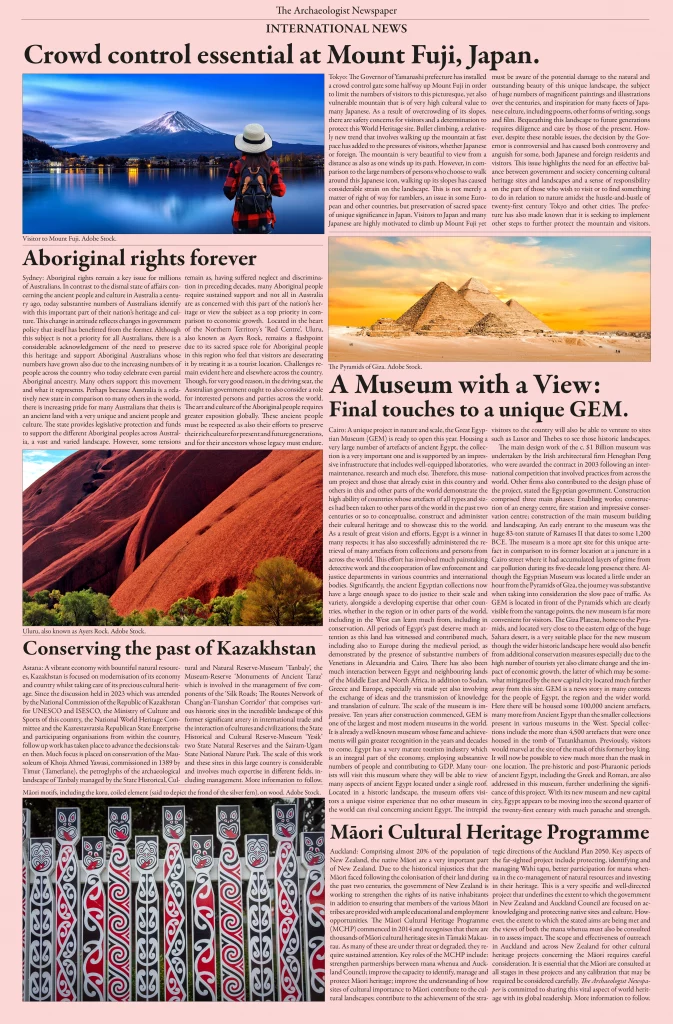
News stories
At the cutting edge of journalism about archaeology and cultural heritage, The Archaeologist Newspaper addresses a vast range of news stories at all scales from local to global. Whether a recent development or an ongoing issue, we bring to readers a substantive body of journalism of stories that inform, intrigue and challenge. Our mission is to investigate and communicate news of the world of archaeology and cultural heritage to a global readership. Contributing to knowledge and understanding, we are also very focussed on building bridges across society and the world and therefore take much delight in sharing local archaeology and cultural heritage stories from locales in Western Europe with the rest of the world and vice versa. Contributing to respect and fraternity, our mission, as well as our modus, is to generate interest in locales in one part of the world about those in locales across the world. News articles vary in size and depth. Some provide short overviews of stories and developments, whilst others focus on a specific issue in greater detail. Writing for a global readership is a challenge, especially concerning this field, as this scope and scale of dissemination of news and knowledge of different archaeological and heritage sites and issues to people in other lands and places in this manner requires much thought, effort, care and diligence. Highly able and very well motivated to produce engaging news in this very specialist genre of journalism, our writers are well-managed by the editorial board that is in formation and will expand during the first and second years of publication. Many articles and features that are published in each edition retain a continuous utility in future years, whether for research of news, journalism or the issues they address. Archaeology is a subject that addresses considerable periods of time and our work as a long-term effort, whilst also calibrated and intuitive to the needs of each week and day. This is one of many reasons why our publication is an exciting project that has much to offer readers, writers and contributors and many other stakeholders across the world.
News stories in preparation include:
- Protecting Stonehenge from vandalism
- The digitised space: Benefits and dangers
- Friend or foe? AI in cultural heritage
- Climate change and historic landscapes
- Dangers posed to Indus Civilization sites
- Artefacts returned to Iraq
- Egypt’s huge new museum
- EU priorities
- Conserving Australia’s ancient cultural landscape: Uluru (Ayers Rock)
- The plight of cultural heritage in New Caledonia
- Amazonian deforestation: Native tribes seek help
Features
These pieces provide the reader with an informative overview and insights into specific topics and issues. Much thought and attention are provided to subject matter and phenomena addressed as writers disseminate knowledge and understanding that is aimed to engage and challenge. Often supported with illustrations, these ‘stand-alone’ pieces focus on the specific in an imaginative manner, sharing many perspectives in reflection of our commitment to pluralism and informative coverage. Artefacts and archaeology are not without complexity and must be understood as also public engagement from a variety of perspectives. One size does not fit all. Oversimplification often lacks depth and nuance. Examining a monument such as Stonehenge, stone figures on Easter Island or a Ziggurat in Iraq requires an appreciation of their many dimensions and issues, whether concerning their construction, purpose and role in their historic landscape or other more subtle phenomena. Conservation of these sites is also not without complexity amidst a range of challenges and a need for an effective conservation management plan (CMP). Industry and other factors, including climate change, are key challenges for archaeological sites across the world. Public education, including the work of our newspaper, will contribute to highlighting these and other issues and has the potential to contribute to the mitigation of these challenges in so far as this is possible. Larger in size than articles, features may be topical or address a specific knowledge-related issue in greater depth than a news article. A news story in our newspaper about coin finds provides an overview of the find, whilst a feature will examine the subject in greater detail, relating the ‘micro’ story to a broader picture, not only concerning distribution patterns of similar finds but a range of issues available at the fingertips of readers. In this manner, readers are informed of knowledge and issues without having to engage in an equivalent reading of many different books and journal articles, though we encourage the access of these additional resources to extend engagement with articles and features in the newspaper. The published work of some authors of pieces is also included as suggested reading, where relevant.
Examples of features that the newspaper is preparing:
- The delicate work of field archaeologists
- Reading the historic landscape
- Making museums more cosmopolitan
- Long-distance trade in antiquity
- Elizabethan textiles
- Photographing the past
- Conserving Renaissance Italian art
- In search of the Qin dynasty
- Medieval medical instruments
- Otzi
- The study of archaeology
- Colour in prehistory
- The Athenian Acropolis
- Reviewing books
- Coins of the Viking Age
- Mughal architecture
- Broadening access to archaeology in society
- Roman London
- Māori sacred space
- The medieval military architecture of France
- The Silk Road
- Early agriculture in Europe
- The Indus Civilization
- Studying archaeology
- Studying cultural heritage and its management
- Conserving cultural heritage
- The legislative framework
- The archaeology of music
- Early scripts and writing
- Coastal and maritime archaeology
- The Louvre Museum
- Combining forces: Archaeology and anthropology
- To excavate or not?
- An interview with….
Podcasts
Informative and engaging podcasts will be hosted and produced by The Archaeology Newspaper. This effort is part of our outreach work and extends the discussion of some of the news and other articles, and features of the newspaper. In some cases, further elaboration of linked information of issues explored and addressed in the podcast will be provided in the newspaper, journals and other publications of the publisher.
Interactive
Our publication engages in discussion with a valued readership. Via the newspaper blogs and other activities, in addition to letters to the editor and social media, readers will be able to participate in the work of the newspaper. Journalism and pieces for our newspaper, as well as photography and relevant information, are also welcome from prospective readers, as noted elsewhere. Further information to follow.
Illustrations
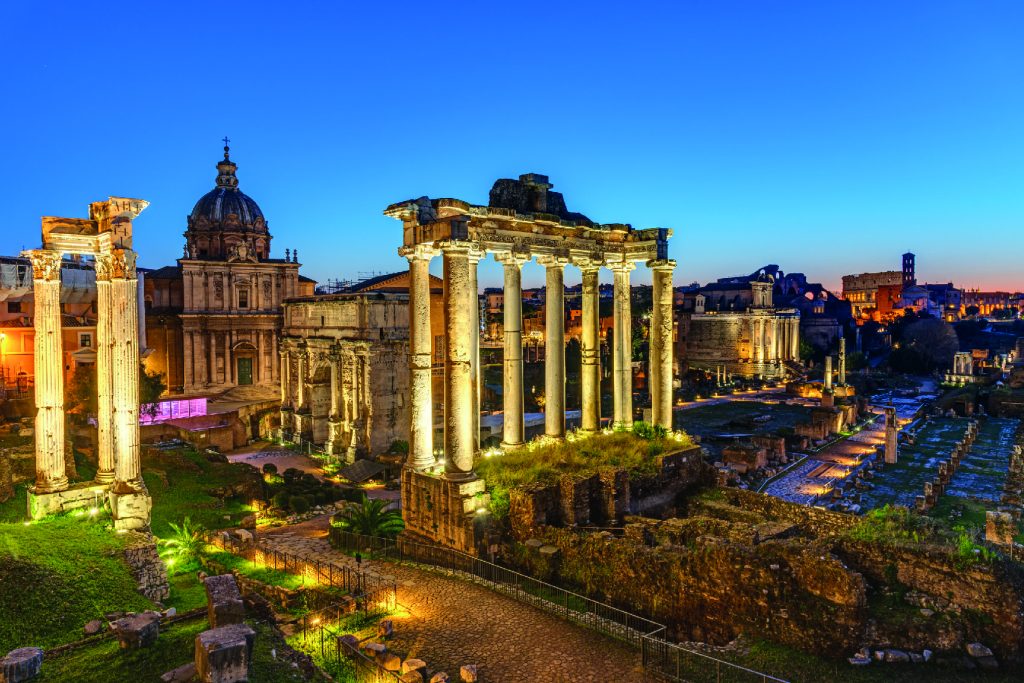
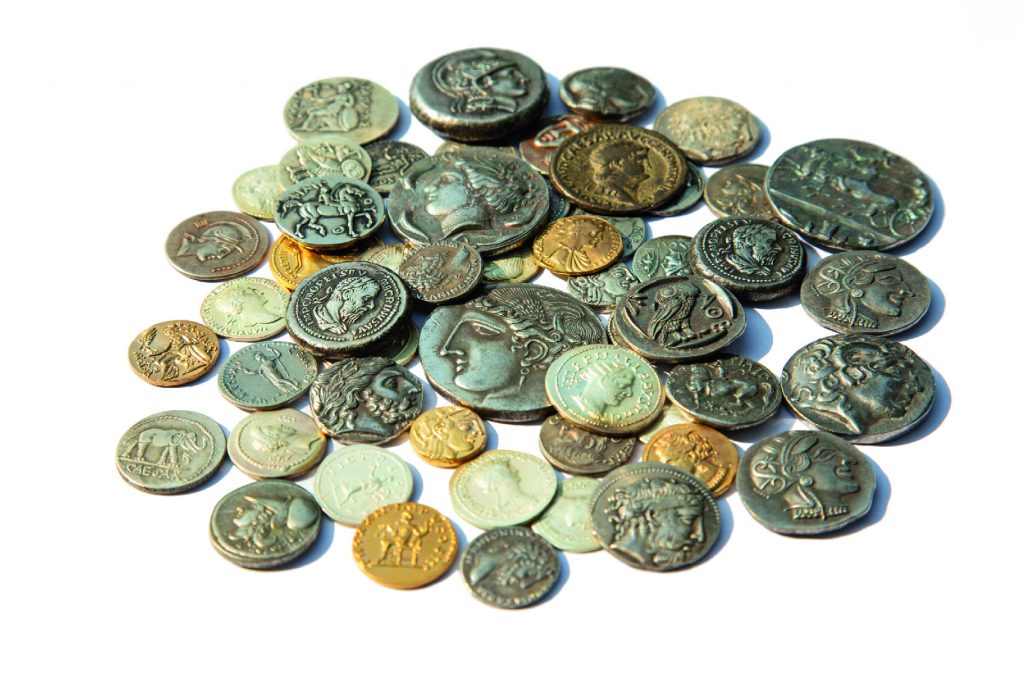
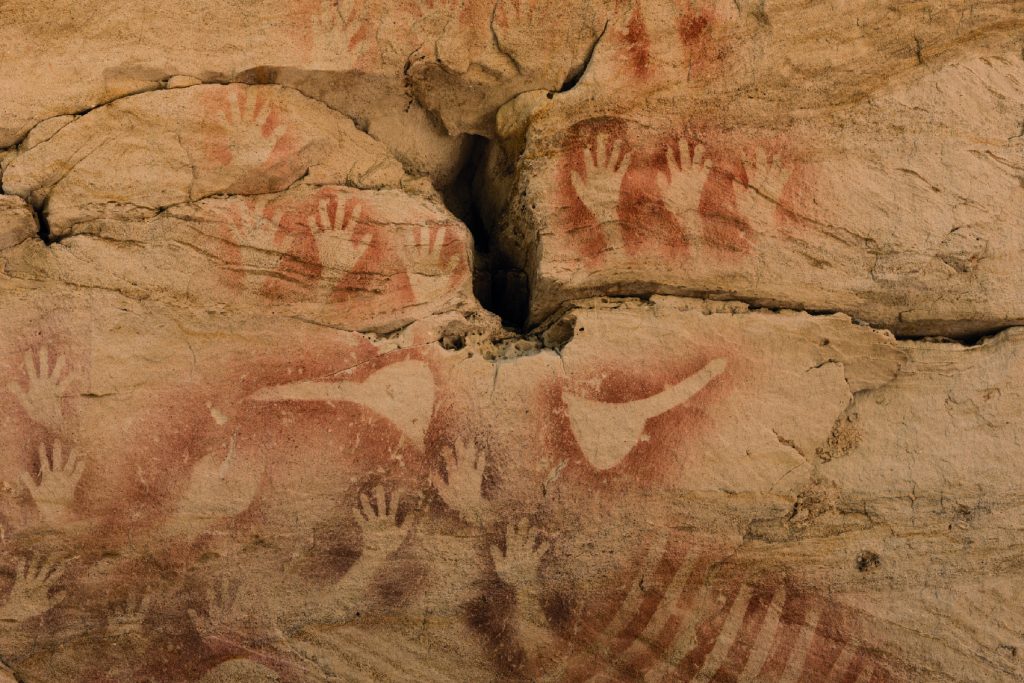
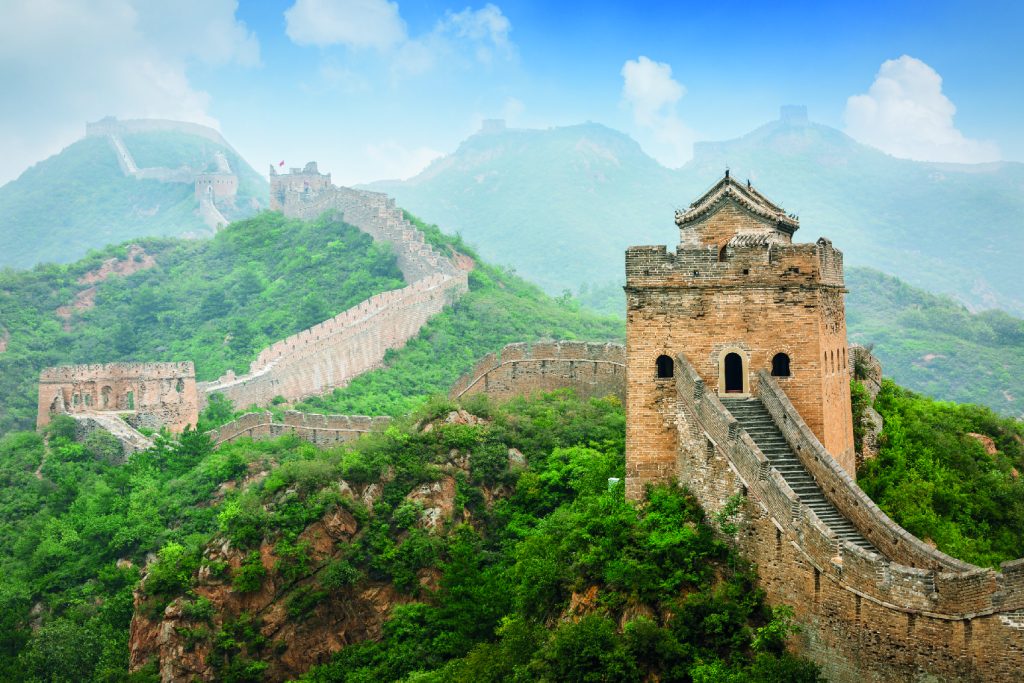
A highly illustrative subject, archaeology studies and reportage benefit from a variety of types of illustrations, whether photographs of artefacts, stratigraphy, sites of a variety of scales, drawings and photographs of landscapes, that in themselves comprise the broader definition of an archaeological or historic site, and much else. Reflecting this vital element, the newspaper will feature a substantive number and type of illustrations that also highlight the unique work and genre of this publication. The use of illustrations in this manner provides depth and relevance to the news stories and features and, therefore, also reflects on our ethical commitment and ethos to the reader. However, due to the scale of stories and pieces, it is not possible to include too many illustrations on each page. Therefore, the editorial board approves a certain number and size of illustrations for articles, pieces and notices for each issue. Whilst some charts and other forms of non-photographic illustrations are to be produced by writers, others will be generated by the research and graphics departments. Third parties are also able to play a role in this effort. Prospective authors of articles and pieces are invited to consider how best to illustrate their submission. Adherence to copyright is essential. A further issue to note is the nature of newspaper printing. As thinner paper than that in many books is used, less ink is also used than in a newspaper to ensure that the page is not affected by the ink on the reverse side of the same sheet. Photographs that feature considerable contrast of lighting will not be very well presented in this format of printing. Our editorial staff will be able to provide further information, and a note will appear in the newspaper concerning this issue.
Unique genre
Journalism of archaeology and cultural heritage is addressed professionally and effectively, drawing on careful thought, preparation, editorial process and specialism. The needs of this genre are substantive, as alluded to above and elsewhere. Whilst we have not founded the writing of archaeology and cultural heritage for print and online formats, we are a pioneer in specialising in this genre at this scope, depth and concerning approaches used. A careful balance between news material and reportage and academic publishing is maintained, which, when linked to the other elements of our newspaper, highlights our expertise and contributions for our diverse and global readership, in addition to archaeology, cultural heritage and journalism. It is possible that in due course, our newspaper will establish benchmarks and impact on the work of other journalists, newspapers and news outlets concerning our specialisation.
New insights and perspectives
A key characteristic of our work is a commitment to identify and produce news stories, features and other information that provides new insights and perspectives for our readership. We focus not only on the famous but also lesser-known jewels of archaeology and cultural heritage from across the world. As a global publication that upholds cognitive justice, by sharing the perspectives of archaeologists and those who work in cultural heritage from diverse backgrounds, we facilitate disseminating yet also connecting their work and views to people across the world. Consequently, our publication is a unique platform that facilitates selection, authoring and illustrating stories, both famous and lesser known, in a manner that makes them relevant, engaging and interesting. Whilst there are a huge number of relevant stories and subject matter that deserve coverage, due to space, we provide a combination of news, views, knowledge and understanding that contribute to readers across the world. Whether concerning the physical condition of Hadrian’s Wall or other monuments, the impact of climate change, mass visitors or neglected historical sites and landscapes, conservation of sites and artifacts, relevant legislation and guidelines, the work of governments, and international bodies such as UNESCO, museum organisation and news, visitor experience, university courses, book reviews or interviews with expertise, each edition of the newspaper generates and provides innovative stories and features that extend, deepen, broaden and also challenge the reader. The limitations and achievements of space concerning material culture are highlighted and examined, whether concerning Stonehenge, a medieval hospital, a Renaissance era university or the world’s first handheld tablets as devices to produce and store knowledge in ancient Mesopotamia.
In our focus on the translation of culture, we consider carefully how particular approaches and meanings have been derived from material culture such as motifs on coins in a specific time, place and context. However, in this effort, as also attention to the transmission of culture and civilization across time and place, we demonstrate how this and other material culture have been enriched as a result of interactions with people elsewhere. There are many other issues pertaining to archaeology and cultural heritage that we also explore and report on. Sometimes, news stories focus on either those who make decisions or those affected. We strive to share the views of different persons. Conserving heritage sites, including landscapes and monuments, is an essential subject in archaeology and cultural heritage and involves much specialisation and effort. This vital service to society, country and the world requires greater exposition in the public sphere by which the issues and processes entailed are unpacked and explained via text and illustrations. Past images, whether photography or hand-drawn or painted, contribute to articles and pieces of this subject and may demonstrate, where evident, decay, and, therefore, the need to conserve and protect, or even how conservation efforts of the past have changed and damaged the character of the site or monument. Photographers are also briefed on how to produce images that not only capture the scope and character of subject matter but also how new insights and perspectives are achieved for viewers as a result of the frame of the photograph, distance of the photographer, impact of light and other elements. This information is also shared in our newspaper for readers. Innovation, though also integrating and celebrating the achievements of past scholarship and efforts, even where addressing gaps in knowledge and understanding is made, and contribution to readers is a key role of our publication and is integrated very robustly into its approaches and systems, including editorial management and grassroots reportage. Making the global relevant to the local and the local relevant at the global scale requires attention to all aspects of the publication, including insights and perspectives that result from our work. Reflective of our commitment to professional development, including reflective practice, the work of the publication also generates fresh insights and perspectives for staff.
Educational and professional development skills
Reader-centred, The Archaeologist Newspaper facilitates much thought and reflection. Focused on knowledge, understanding and education, this approach further defines our publication as does the variety of periods, places and phenomena that we bring to our local, national and global readership.
Reflective of the discipline and contributing context, case studies and perspectives to the former, critical engagement with the past and subject matter and issues examined is a key aspect of our work. An effective balance of evidence and interpretation is sought.
Transparency of information, analysis and conclusions is essential.
Respect for contributors, readers and all stakeholders, as well as subject matter explored and examined, is essential. Even where an article seeks to highlight shortcomings concerning a particular issue, the formation and presentation of knowledge in the article or feature must be undertaken in a balanced and non-vindictive manner. We set high benchmarks also in this area and apply the United Nations Charter in championing respect for fellow human beings.
Written communication, illustrations and other forms of knowledge and understanding and their integration into an article or piece, provide readers with much material that conveys not only knowledge and understanding of subject matter but also its organisation and presentation in a scholarly manner, albeit in a manner suitable for a broader readership.
Key issues in archaeology field work, including organisation, teamwork and time management in a multiphase project, are conveyed.
Reflection and personal and professional development are contributed to via the range of articles and pieces, and other information and its presentation.
Vital bridges are established that contribute to social harmony and human fraternity, which are also very helpful in self and professional development that benefit organisations, institutions, corporate bodies, societies and the wider world.
Reflective of our aims and values, we provide insight into archaeology and journalism in archaeology and cultural heritage to our readership. This is achieved via the range of articles, features and other pieces in addition to specific efforts in the newspaper, including a specific focus on what archaeology is, how it is undertaken, explaining and unpacking jargon, technology and procedures, ethics, citizen archaeology and much else. Increasing public knowledge of archaeology and cultural heritage is a key aim and focus of our work at a global scale.
Courses and a training programme for those at different levels in archaeology and journalism of archaeology and cultural heritage are in the pipeline.
Socio-economic strata
Our publication focusses on people of all socio-economic strata. Whether they were rulers or ruled, wealthy or impoverished, we examine and disseminate information about persons of different strata and segments of society from across the world. Palaces and monuments were commissioned by rulers, yet built by ordinary-level persons and staffed by this or a middle tier of social strata. Even if relatively small in comparison to others, we seek out the presence of people from across time. Functioning as a (metaphorical) form of telescope through time, we identify and share insight of those whose presence was faint or even invisible to the naked eye to others in their own time and thereafter. In some cases, where adequate material evidence is extant, we link these persons with more famous persons, places and phenomena. These, and other connections, including fraternity, are forged by the newspaper with its readership.
Gender and children
Vastly underrepresented in studies of the past, women have played a hugely significant role in societies across the world. Whether concerning medicine, farming, art, architecture, production of material culture and its use, textiles, design and many other activities, this notable aspect of the human story from prehistory to the modern period is addressed and celebrated. Attention is also provided to children, who, in many cases, have been even less represented in studies of the past than women, except very famous persons such as Tutankhamun (c. 1341-c. 1323 BCE), ruler of ancient Egypt from the age of (c.) nine.
Financial journalism
In this field too, we offer unique coverage, whether of the archaeology and history of finance at different scales and applications and the finance of work in archaeology and cultural heritage of the past and present.
Sports
A sports section in a newspaper as has seldom been viewed before. The Archaeology Newspaper brings you a world of sports history from across the world that contributes to your knowledge base of the origin and spread of various sports, using material evidence of artefacts, sites and other evidence. In scope and approach, our newspaper offers readers a further unique and long view in an imaginative and engaging manner. Whether you are interested in the early Olympics, football, ice-skating, long-distance running, rugby, wrestling, martial arts or other sports, we invite you (following publication of our newspaper) to commence the journey of knowledge and understanding of this notable yet far too underrepresented aspect of local, national and global heritage and culture.
Ethical journalism
The newspaper is committed to providing readers with accurate news stories and features that inform. Our work is transparent and adheres to high standards, including in ethics. Material evidence and other forms of information are well-researched, verified and presented in a balanced manner concerning their interpretation. Significant in archaeology, context is an essential part of a news story. Care for content is essential and is not compromised by the speed of story compilation. Sources are presented. Honest reportage is essential, as is protecting people, including journalists and stakeholders from harm. The independence of writers and contributors is essential. Writers must avoid a clash of interests between their story and their lives. However, we may ask for a citizen piece from an affected part of the world where the cultural heritage landscape is under threat, and the point of view of those affected is an integral part of the story. The editorial team will assess the contents of such a piece to ensure that it meets our ethical standards. We will publish a story if it adheres to high ethical standards, even if it is legally acceptable to publish it. As a knowledge-focussed publication, the newspaper does not seek to impose a single view on readers and therefore provides ample scope for critical thought. As with other humanities subjects, despite the scientific aspects of archaeology, the role of interpretation by readers is hugely important. Readers may view the evidence, consider the analysis and views put forward in the article and formulate additional insights and conclusions. There is much scope in archaeology for multiple points of view, and the newspaper encourages pluralism. New findings across the world and studies thereof constantly extend knowledge and understanding of the past. It would, therefore, be unethical to assert the final say about phenomena from the past whose interpretation is constantly expanding, and some past interpretations challenged.
Our writers and contributors are from a diverse range of backgrounds and views, as are our readers, who may contribute to discussion in and about articles and features via letters to the editor, blogs and other ways that are under development. Where readers have pointed out a mistake in a news piece or feature, or other information presented, the newspaper shall, upon verification, correct its information and make this known. The newspaper will not accept unethical conduct. The many ethical dimensions of archaeology and journalism are key issues for the newspaper that will not impose political ideology on its readership. Where threats to the integrity of archaeology and heritage sites or artefacts are demonstrated, the newspaper will vigorously argue its case for redress of such situations in holding those responsible to account. Neither party politics nor political ideology shall play a role in this or other efforts and work of the newspaper. We are committed to sharing the fuller scope of the human story that involves people from different lands, cultures and civilizations and periods rather than remaining focused on a single place and people. Our newspaper contributes to enthusing and disseminating respect across society and the world, reflective also of its ethical commitment. As a publication whose content has a substantive lease of life that will continue to inform readers well after the time of publication, in some cases for years and decades, we take special care to ensure the integrity, value and implications of the story for present and future readership, in as much as this is possible. This newspaper applies a unique mission and offers a unique space for the development and well-being of readers. Further information on this subject shall follow. See also ‘values’ above.
Protecting the environment and utilising the wisdom of the ancients
Our desire to protect the environment is also an integral part of our ethical commitment. Print editions utilise FSC-approved paper that has been responsibly sourced. Other elements of our work, including content, also reflect our commitment to the environment. Of the latter, the newspaper shares with readers the wisdom of the ancients in living and thriving in a manner that respects nature and the environment, including mitigating climate change, flooding and other challenges.
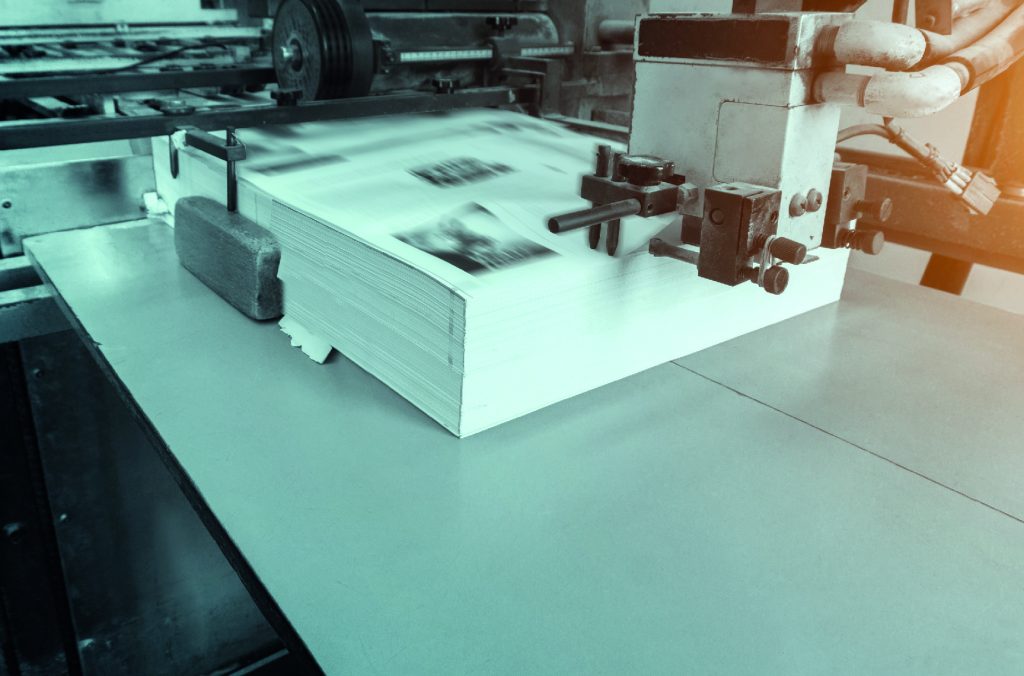

Further information, including scheduling, to follow.